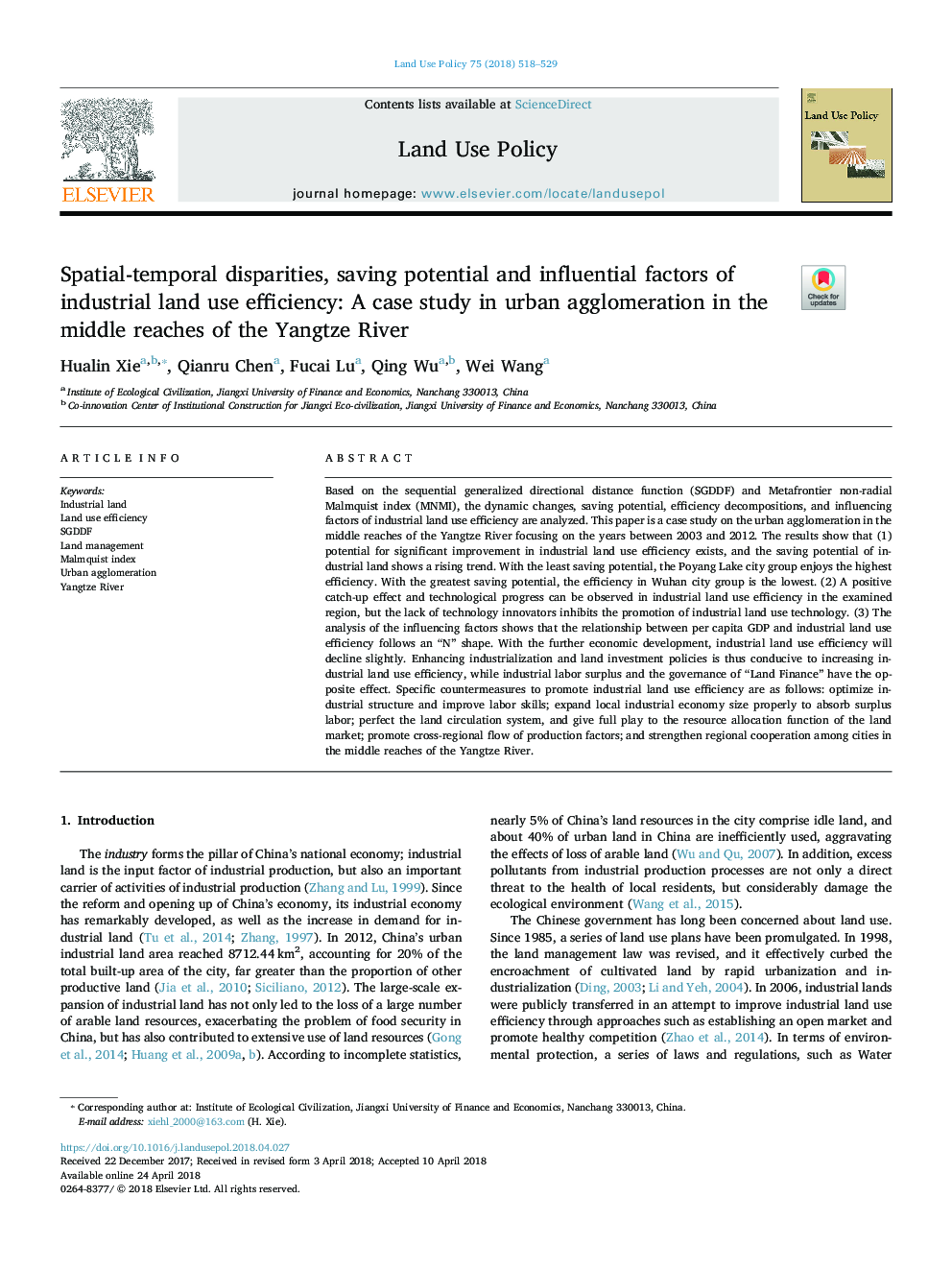| کد مقاله | کد نشریه | سال انتشار | مقاله انگلیسی | نسخه تمام متن |
|---|---|---|---|---|
| 6546435 | 1421808 | 2018 | 12 صفحه PDF | دانلود رایگان |
عنوان انگلیسی مقاله ISI
Spatial-temporal disparities, saving potential and influential factors of industrial land use efficiency: A case study in urban agglomeration in the middle reaches of the Yangtze River
ترجمه فارسی عنوان
نابرابری فضایی-زمانی، صرفه جویی در پتانسیل و عوامل تاثیرگذار در بهره وری استفاده از زمین های صنعتی: مطالعه موردی در شهرک سازی شهری در میانه ی رودخانه یانگ تسه
دانلود مقاله + سفارش ترجمه
دانلود مقاله ISI انگلیسی
رایگان برای ایرانیان
کلمات کلیدی
موضوعات مرتبط
علوم زیستی و بیوفناوری
علوم کشاورزی و بیولوژیک
جنگلداری
چکیده انگلیسی
Based on the sequential generalized directional distance function (SGDDF) and Metafrontier non-radial Malmquist index (MNMI), the dynamic changes, saving potential, efficiency decompositions, and influencing factors of industrial land use efficiency are analyzed. This paper is a case study on the urban agglomeration in the middle reaches of the Yangtze River focusing on the years between 2003 and 2012. The results show that (1) potential for significant improvement in industrial land use efficiency exists, and the saving potential of industrial land shows a rising trend. With the least saving potential, the Poyang Lake city group enjoys the highest efficiency. With the greatest saving potential, the efficiency in Wuhan city group is the lowest. (2) A positive catch-up effect and technological progress can be observed in industrial land use efficiency in the examined region, but the lack of technology innovators inhibits the promotion of industrial land use technology. (3) The analysis of the influencing factors shows that the relationship between per capita GDP and industrial land use efficiency follows an “N” shape. With the further economic development, industrial land use efficiency will decline slightly. Enhancing industrialization and land investment policies is thus conducive to increasing industrial land use efficiency, while industrial labor surplus and the governance of “Land Finance” have the opposite effect. Specific countermeasures to promote industrial land use efficiency are as follows: optimize industrial structure and improve labor skills; expand local industrial economy size properly to absorb surplus labor; perfect the land circulation system, and give full play to the resource allocation function of the land market; promote cross-regional flow of production factors; and strengthen regional cooperation among cities in the middle reaches of the Yangtze River.
ناشر
Database: Elsevier - ScienceDirect (ساینس دایرکت)
Journal: Land Use Policy - Volume 75, June 2018, Pages 518-529
Journal: Land Use Policy - Volume 75, June 2018, Pages 518-529
نویسندگان
Hualin Xie, Qianru Chen, Fucai Lu, Qing Wu, Wei Wang,
